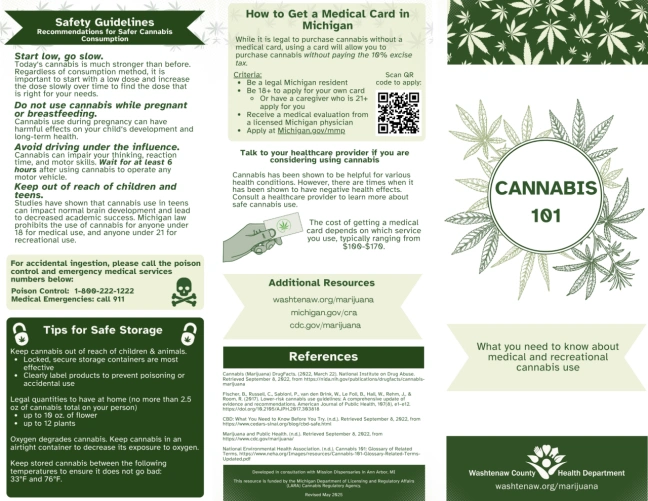The cannabis marketing landscape in 2025 represents both unprecedented opportunity and complex challenges. With the U.S. legal cannabis industry projected to surpass $45 billion in annual sales, businesses operating in this space face a unique paradox: explosive market growth constrained by intricate regulatory frameworks that vary dramatically across jurisdictions.
Currently, 24 states plus the District of Columbia have approved measures to legalize cannabis for adult recreational use, while 38 states, DC, and five US territories have legalized medical cannabis in some form. This patchwork of legalization has created a complex marketing environment where success requires not just creativity and strategic thinking, but also deep regulatory knowledge and compliance expertise.
The medical cannabis market alone is projected to nearly double to over $16 billion by 2025, with the global medical cannabis market expected to reach $87.4 billion by 2027. These figures represent more than just market size—they indicate a fundamental shift in consumer acceptance and mainstream adoption of cannabis products.
However, cannabis marketers face unique challenges that don’t exist in traditional consumer goods industries. Federal advertising restrictions limit access to mainstream platforms like Google, Facebook, and YouTube. Banking limitations constrain payment processing options. Product packaging must comply with strict labeling requirements while avoiding appeals to minors. Despite these hurdles, forward-thinking cannabis companies are developing innovative marketing strategies that not only achieve compliance but drive exceptional business results.
This comprehensive guide explores proven cannabis marketing strategies, from foundational digital approaches to emerging trends shaping the industry’s future. We’ll examine real-world case studies, analyze successful campaigns, and provide actionable frameworks that cannabis businesses can implement regardless of their size or market focus.
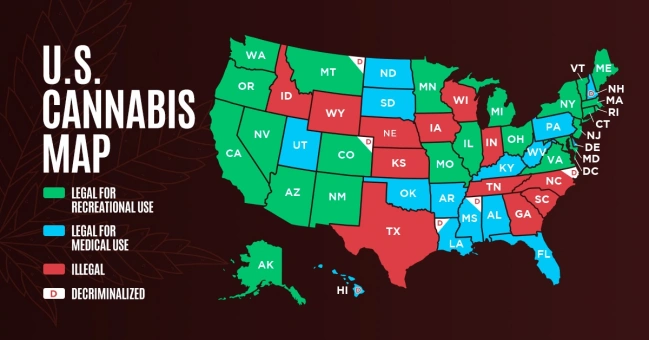
Understanding the Regulatory Environment
Federal vs. State Regulations
Cannabis marketing operates within a complex web of federal and state regulations that create both challenges and opportunities for savvy marketers. While cannabis remains federally illegal, state-level legalization has created a patchwork of regulations that vary significantly across jurisdictions.
At the federal level, cannabis businesses face restrictions that impact virtually every aspect of marketing and operations. The Drug Enforcement Administration (DEA) maintains cannabis as a Schedule I controlled substance, which limits research opportunities and creates banking challenges that affect payment processing and advertising options. However, recent developments show promise—the federal Department of Health and Human Services has recommended moving cannabis out of the most restrictive category of scheduled drugs.
State regulations vary dramatically in their approach to cannabis marketing. Some states, like Massachusetts, allow dispensaries to include descriptive product information on websites, including cultivator details and symptom relief information. In contrast, Connecticut restricts dispensaries to listing only terpenes, flavors, and chemical compound makeup. These variations require cannabis marketers to develop state-specific compliance strategies rather than one-size-fits-all approaches.
Local municipalities add another layer of complexity, as they may impose additional restrictions beyond state requirements. Many jurisdictions have specific rules about signage visibility, proximity to schools, and advertising content that cannabis businesses must navigate carefully.
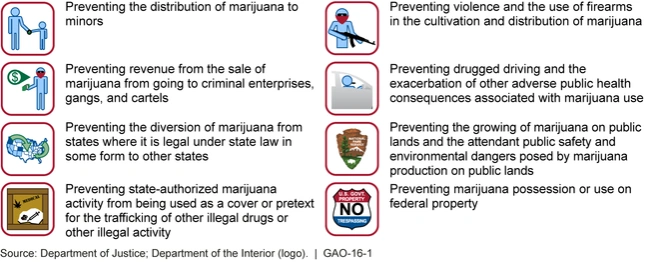
Compliance-First Marketing Approach
Successful cannabis marketing begins with a compliance-first mindset that treats regulatory adherence not as a limitation, but as a competitive advantage. Companies that master compliance early can move faster and more confidently in their marketing efforts while competitors struggle with regulatory uncertainty.
Point-of-sale audits of 150 cannabis retailers across five major cities revealed that successful operators maintain high compliance standards: over 90% demonstrated proper age verification procedures, 87.3% displayed appropriate restricted access signage, and 72% posted required pregnancy and breastfeeding warnings. These compliance foundations enable more sophisticated marketing strategies.
Effective compliance strategies include establishing clear approval processes for all marketing materials, maintaining documentation of regulatory reviews, and working with experienced cannabis marketing agencies that understand the nuanced requirements across different jurisdictions. Many successful companies implement internal compliance reviews before external agency reviews, creating multiple checkpoints that prevent costly mistakes.
Risk Management Strategies
Risk management in cannabis marketing extends beyond basic compliance to encompass reputation management, platform policy changes, and evolving regulatory landscapes. Smart cannabis companies build flexibility into their marketing strategies to adapt quickly when regulations change.
Documentation plays a crucial role in risk management. Maintaining detailed records of marketing decisions, compliance reviews, and regulatory guidance helps companies demonstrate good faith efforts if questions arise. This documentation also proves valuable when expanding to new markets, as it provides a foundation for understanding regulatory differences.
Platform diversification reduces risk from sudden policy changes on individual marketing channels. Rather than relying heavily on any single platform, successful cannabis companies build owned media properties—websites, email lists, and customer databases—that provide direct communication channels independent of third-party platform policies.
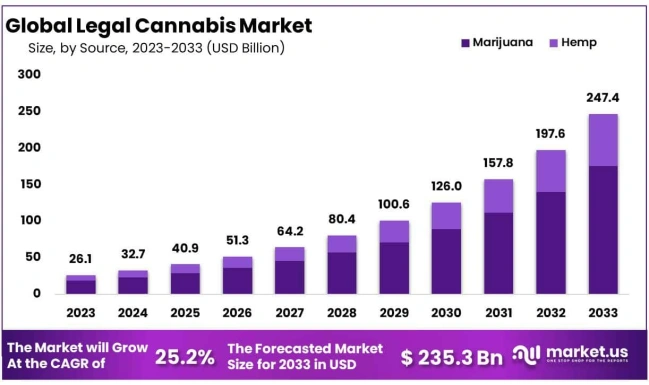
Core Cannabis Marketing Strategies
Digital Marketing Foundation
Digital marketing forms the backbone of modern cannabis marketing strategies, despite platform restrictions that require creative approaches. According to industry data, digital advertising represents the leading marketing strategy for cannabis brands, reaching 83% adoption among successful companies.
Search Engine Optimization (SEO) emerges as a critical digital strategy for cannabis businesses. A Massachusetts cannabis dispensary demonstrated the power of strategic SEO by increasing keyword ranking growth by 3,092% in roughly a year through comprehensive content strategy and implementation. This dramatic improvement shows that high-volume, low-competition keywords remain available in the cannabis space for companies willing to invest in quality content and technical optimization.
Cannabis SEO requires a unique approach that balances industry-specific terminology with broader wellness and lifestyle keywords. Successful companies focus on educational content that addresses common consumer questions about cannabis products, usage, and benefits without making medical claims that could trigger regulatory issues.
Social Media Marketing in the cannabis industry follows an 80/20 approach: 80% value-driven educational content and 20% promotional messaging. This strategy acknowledges platform restrictions while building community engagement and brand authority. A professional cannabis social media marketing strategy resulted in 3x follower growth for a CBD brand in less than a year.
The social media landscape for cannabis continues evolving rapidly. In 2023, there were over 20 million tweets about cannabis topics—more conversation than coffee, golf, or the NHL. This volume of organic conversation creates opportunities for brands that can participate authentically in cannabis culture and education.
Email Marketing provides one of the most direct and effective channels for cannabis businesses. With email marketing ranking as the second most effective medium for building brand awareness among small businesses, cannabis companies can leverage this channel for customer education, loyalty programs, and direct sales support.
A pet CBD e-commerce brand generated an average of $2,641.05 in revenue through cannabis email marketing over a year-long period. This demonstrates the potential for targeted email campaigns that provide value while driving consistent revenue streams.
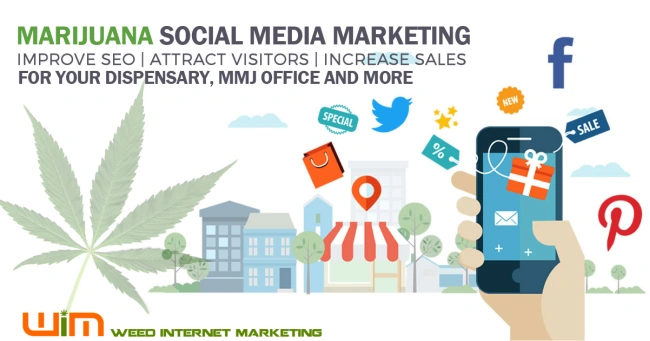
Traditional Marketing Approaches
While digital strategies dominate cannabis marketing discussions, traditional marketing methods provide valuable opportunities for brand building and customer acquisition, particularly in local markets where cannabis businesses must establish community presence.
Print and Direct Mail campaigns offer compliant alternatives to digital advertising restrictions. Industry publications provide targeted audiences already interested in cannabis products and culture. Direct mail campaigns can reach specific geographic areas where cannabis businesses operate legally, allowing for precise targeting based on proximity to dispensaries or demographic characteristics.
Public Relations and Media Outreach strategies prove particularly effective for cannabis businesses seeking to build credibility and thought leadership. Press releases function as highly trustworthy content that can generate media coverage and improve search engine optimization simultaneously.
Event Sponsorships and Trade Shows create opportunities for direct customer engagement and industry networking. Cannabis businesses can participate in wellness fairs, industry conferences, and community events to build brand awareness while demonstrating their commitment to local communities.
Educational Content Strategy
Content marketing represents one of the most effective long-term strategies for cannabis businesses, addressing consumer education needs while building brand authority and search engine visibility. Educational content serves multiple purposes: it builds trust with consumers who may be new to cannabis, demonstrates compliance with regulations that encourage education over promotion, and creates valuable owned media assets.
Blog Content and Educational Resources should address the full spectrum of consumer questions about cannabis products, usage, safety, and benefits. Successful cannabis companies develop content calendars that cover strain information, dosage guidelines, product comparisons, and wellness applications. This content approach captured 54% of decision-makers who spend more than one hour per week reading thought-leadership content.
Video Content and Webinars provide engaging formats for complex cannabis education. Behind-the-scenes content showing cultivation processes, product manufacturing, and quality control procedures helps consumers understand the care and expertise involved in cannabis production. Educational webinars can establish companies as thought leaders while providing valuable consumer education.
Third-Party Testing and Safety Information transparency builds consumer confidence in an industry where quality and safety concerns remain paramount. Companies that proactively share testing results, safety protocols, and quality assurance processes differentiate themselves from competitors and address consumer concerns about product reliability.
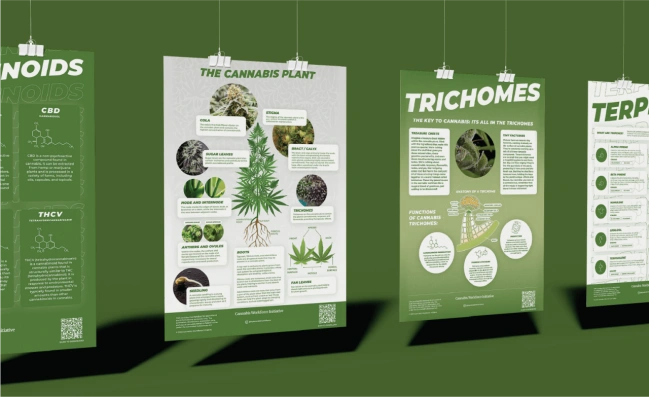
Business-Type Specific Strategies
B2C Strategies for Dispensaries and Direct-to-Consumer Brands
Business-to-consumer cannabis marketing requires understanding diverse customer personas and developing targeted strategies that address different consumer segments. Successful dispensaries and direct-to-consumer brands invest heavily in customer research and persona development to create personalized marketing experiences.
Customer Persona Development begins with demographic analysis but extends to usage patterns, purchase motivations, and lifestyle preferences. Data shows that 41% of Gen Z and Millennials make impulse purchases online every 2-3 weeks, compared to only 10% of Baby Boomers. This generational difference requires different messaging strategies and channel selection for maximum effectiveness.
Cannabis businesses must also consider the distinction between medical and recreational users, as these segments have different information needs, purchase patterns, and regulatory requirements. Medical patients often require more detailed product information and dosage guidance, while recreational users may respond better to lifestyle and experiential messaging.
Loyalty and Retention Programs prove particularly valuable in cannabis retail, where customer lifetime value can be substantial. SMS marketing campaigns for cannabis retailers showed impressive results, with ticket sizes averaging $96 for delivery and $84 for retail. A Massachusetts dispensary generated an average revenue of $40k per week for each SMS message sent, demonstrating the power of direct communication with engaged customers.
Successful loyalty programs go beyond simple discounts to provide educational content, early access to new products, and personalized recommendations based on purchase history. These programs create competitive advantages while building customer databases that support future marketing efforts.
Cross-Promotion and Product Education strategies help customers navigate the complex cannabis product landscape. Many consumers remain uncertain about different product types, dosages, and effects. Businesses that excel at customer education through staff training, educational materials, and consultation services build stronger customer relationships and higher average order values.
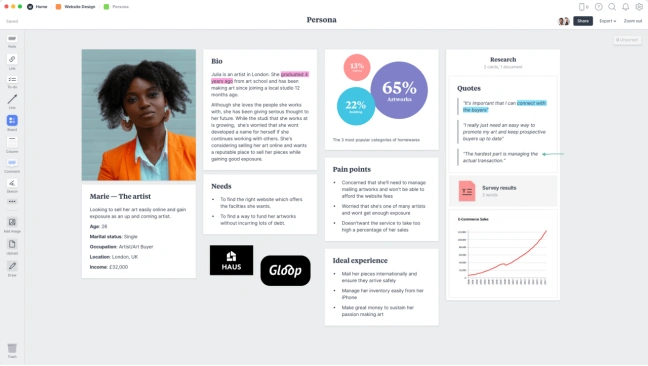
B2B Marketing for Cannabis Suppliers and Manufacturers
Business-to-business cannabis marketing operates in a different regulatory environment with unique challenges and opportunities. B2B cannabis companies often have more flexibility in their marketing approaches while serving sophisticated customers who require detailed technical information and industry expertise.
Industry Networking and Conferences play a crucial role in B2B cannabis marketing. Trade shows provide opportunities to demonstrate products, build relationships with potential customers, and stay current with industry trends. The cannabis industry’s rapid evolution makes these events particularly valuable for companies seeking to establish thought leadership and build distribution networks.
White Papers and Technical Documentation serve important roles in B2B cannabis marketing, particularly for companies selling cultivation equipment, extraction technology, or processing solutions. Technical buyers require detailed specifications, performance data, and application guides to make informed purchasing decisions.
Peer-to-Peer Recommendations and Case Studies carry significant weight in B2B cannabis marketing. Success stories from existing customers provide social proof and demonstrate real-world applications of products and services. Companies that systematically collect and share customer success stories create powerful marketing assets that influence buying decisions.
Licensing and Brand Partnership Models
Cannabis companies increasingly leverage licensing and partnership strategies to expand market reach while managing regulatory complexity and capital requirements. Cannabis Sativa Inc. exemplifies this approach, developing customer bases through licensing agreements with third-party manufacturers who maintain compliance with state cannabis laws.
Brand Licensing Strategies allow companies to extend their reach without direct operational investment in new markets. This approach proves particularly valuable in cannabis, where regulatory requirements and capital costs can make direct expansion challenging. Successful licensing programs require strong brand guidelines, quality control standards, and ongoing support for licensing partners.
Strategic Partnerships with complementary businesses create opportunities to reach new customer segments while staying within regulatory boundaries. Cannabis businesses partner with wellness companies, hospitality providers, and lifestyle brands to create cross-promotional opportunities that expand their reach without violating advertising restrictions.

Influencer Marketing Growth
Cannabis influencer marketing continues evolving as platforms develop clearer policies around cannabis content, with influencers building specialized audiences through diverse educational and lifestyle content formats. Instagram remains the dominant platform for cannabis influencer marketing, with 79% of brands using it for influencer campaigns, while YouTube provides opportunities for longer-form content and TikTok attracts younger demographics despite strict content policies.
Platform-Specific Content Strategies
On Instagram, cannabis influencers leverage the platform’s visual nature through high-quality product photography, behind-the-scenes cultivation content, and educational carousel posts that break down complex cannabis topics into digestible information. Instagram Stories and IGTV allow influencers to share real-time experiences, product unboxings, and educational tutorials while navigating the platform’s cannabis content restrictions through creative approaches that focus on lifestyle integration rather than direct promotion.
YouTube enables cannabis influencers to create comprehensive educational content through in-depth product reviews, strain analysis videos, and educational vlogs that explain consumption methods, dosage guidelines, and wellness applications. Many cannabis educators use YouTube’s longer format to address beginner questions alongside advanced topics, creating content libraries that serve both newcomers and experienced consumers.
TikTok influencers focus on cannabis culture and lifestyle content through creative short-form videos that educate and entertain without direct product promotion. These creators use trending audio, educational quick tips, and lifestyle integration content that normalizes cannabis use while staying within platform guidelines that restrict explicit product marketing.
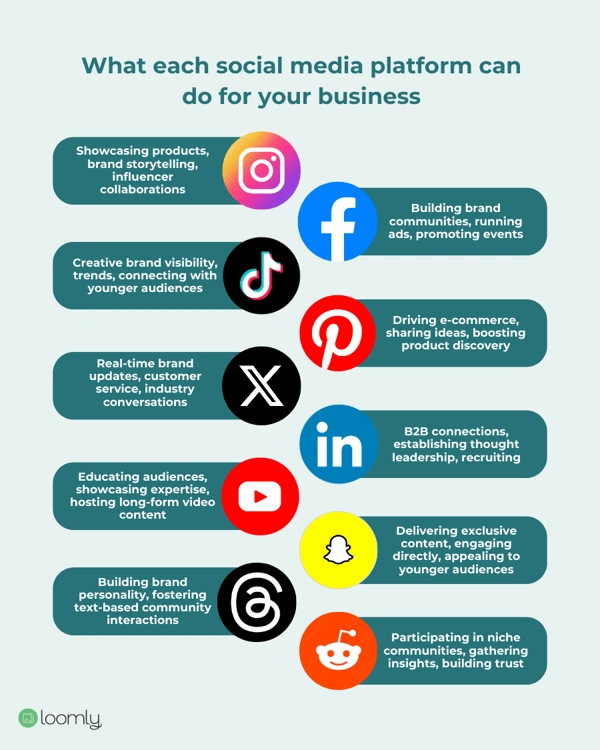
Content Creation
Cannabis influencers excel at creating educational content that addresses varying experience levels within their audiences. Beginner-focused content includes basic consumption guides, terminology explanations, and safety information, while advanced content covers strain genetics, terpene profiles, and specialized consumption techniques. This educational approach builds trust with audiences who rely on influencer expertise to navigate the complex cannabis product landscape.
Personal narrative content performs particularly well for cannabis influencers, as cannabis use represents an intensely personal experience that varies between individuals. Influencers share their own cannabis journeys, medical benefits experiences, and lifestyle integration stories that help destigmatize cannabis use while providing authentic perspectives that resonate with followers seeking relatable experiences.
Successful cannabis influencers leverage user-generated content by encouraging followers to share their own experiences, product reviews, and cannabis lifestyle content. This community-driven approach not only provides authentic social proof but also creates engagement opportunities that strengthen the influencer’s relationship with their audience while expanding content variety beyond what the influencer alone can produce.
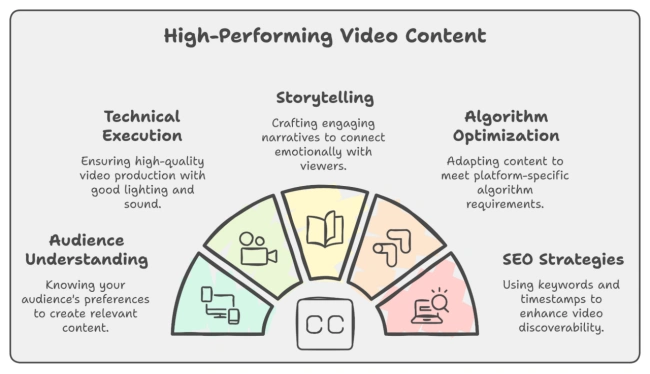
Community Outreach and Social Equity
Cannabis businesses increasingly recognize community engagement as both a marketing opportunity and corporate responsibility, with leading companies implementing comprehensive programs that generate measurable social impact while building brand equity. These initiatives extend far beyond basic charitable giving to encompass systematic approaches that address the historical harms of cannabis prohibition while creating sustainable community partnerships.
Comprehensive Social Equity Program Examples
Verano Holdings demonstrates how large-scale cannabis operators can implement meaningful social equity programs across multiple jurisdictions. Their national initiatives include partnering with Legal Aid Chicago to host virtual expungement and record sealing clinics, providing direct relief for individuals with nonviolent cannabis offenses. Their ongoing fundraising efforts for Mission Green, an organization providing clemency, expungement and pardon support, have generated more than $275,000 in proceeds to date.
At the local level, Verano has engaged various social equity partners for dispensary operations, contributing tens of thousands of dollars in donations to local food banks, resulting in thousands of hot meals for disproportionately impacted residents within their operating communities. Their state-specific programs include dedicated funding for STEM (science, technology, engineering, and mathematics) coursework for disadvantaged youth, directly addressing educational inequities within local school systems.
Cannabis companies are expanding their community engagement beyond traditional social equity populations to include professional education initiatives. Verano provided complimentary training to law enforcement agencies in Pennsylvania, Maryland, Connecticut and Virginia, as well as organizations such as the PA DUI Association and District Attorney’s offices. These sessions covered product types available on the market, safe consumption practices, proper medication storage, and strategies to keep products out of children’s reach, demonstrating how cannabis companies can build community trust through proactive education.
WM Technology (Weedmaps) exemplifies how cannabis technology companies can support social equity through their WM Teal program, which stands for “Together for Equity Access and Legislation”. This program provides free software, advertising, educational materials and training programs to applicants or licensees under social equity licensing programs. The company also participates in policy panels and organizes educational sessions to educate attendees about the importance of social equity programs, while drafting white papers and mock legislative provisions designed to support the enactment of social equity licensing programs.
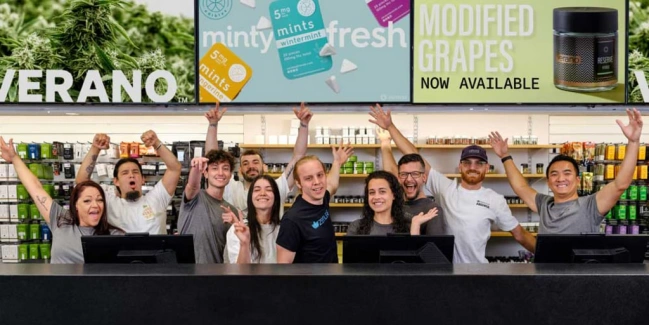
State-Level Social Equity Framework Integration
New York State’s Social and Economic Equity (SEE) program provides a model for how state-level initiatives create marketing opportunities for cannabis businesses. The state’s Marijuana Regulation & Taxation Act (MRTA) establishes a goal to award 50% of all adult-use licenses to social equity applicants, including individuals from Communities Disproportionately Impacted (CDI) by cannabis prohibition.
The SEE Team analyzed 41 years of New York State arrest data to identify communities subject to disproportionate policing and arrest rates, creating a data-driven foundation for social equity efforts. This systematic approach enables cannabis businesses to understand which communities have been most impacted and tailor their outreach accordingly.
New York’s SEE label campaign represents an innovative marketing approach that creates a “badge of pride for operators that will drive consumers to purchase products cultivated, processed, and/or sold by social and economic equity” businesses. This initiative demonstrates how state programs can create marketing advantages for companies that authentically engage with social equity initiatives, allowing them to differentiate their products while supporting equity goals.
Customer-Centric Community Engagement
Trulieve Cannabis Corp. demonstrates sophisticated community engagement through targeted outreach to specific populations. The company regularly engages with veterans, seniors, organizations serving qualifying populations, and various health and wellness groups. This targeted approach recognizes that different community segments have unique needs and communication preferences.
Their educational strategy extends to physician outreach, where educational materials help medical professionals understand cannabinoid science, cultivation standards, regulatory compliance, and patient relief applications. This B2B education strategy supports broader community acceptance while generating patient referrals through professional recommendations.

Workforce Development and Economic Opportunity
Local programs like the City of Coachella’s Cannabis Social Equity Program illustrate how municipalities create comprehensive support systems that cannabis businesses can partner with. The program provides business plan development, business mentoring, assistance securing capital, market assessment, legal entity establishment assistance, criminal records expungement, lease negotiation assistance, and regulatory compliance support.
These programs also include workforce development components, with the city working with local partners to develop educational programs that create “a well-trained, qualified, and diverse workforce, including transitional workers”. Cannabis businesses can partner with these initiatives to address local employment needs while building community relationships.
Strategic Benefits of Authentic Social Equity Engagement
Companies that authentically engage with social equity programs generate multiple strategic advantages beyond positive media coverage. These benefits include enhanced regulatory relationships, as companies demonstrating genuine community commitment often receive more favorable consideration during licensing processes. Social equity engagement also creates differentiation opportunities in competitive markets, particularly as consumers increasingly make purchasing decisions based on corporate social responsibility.
Furthermore, social equity partnerships provide access to community networks and customer segments that may be difficult to reach through traditional marketing channels. Companies like Verano and Trulieve have demonstrated that systematic community engagement creates sustainable competitive advantages while generating measurable social impact.
The evolution of social equity programs from simple charitable giving to comprehensive community partnership strategies reflects the cannabis industry’s maturation and recognition that long-term success requires authentic engagement with the communities most impacted by cannabis prohibition. Companies that invest in these relationships early often establish market positions that become increasingly difficult for competitors to replicate.
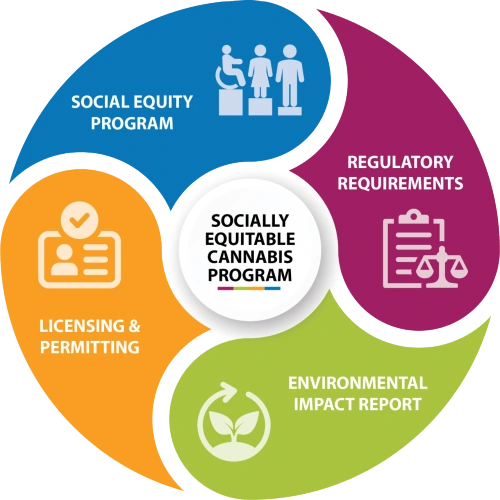
Technology Integration
Advanced customer surveys, programmatic advertising platforms designed for regulated industries, and sophisticated customer data platforms are becoming standard tools for cannabis marketing, with leading companies investing heavily in comprehensive technology ecosystems that enable precise targeting and measurement while maintaining compliance with privacy regulations and industry restrictions.
Customer Data Platforms
WM Technology (Weedmaps) exemplifies the sophistication of modern cannabis technology platforms through WM Insights, an analytics platform that leverages data across their marketplace and software solutions. This system provides data and analytics on user engagement and traffic trends to client listing pages, while allowing brand clients to monitor their brand and product rankings, identify retailers not carrying products, and track top brands and products by category and state.
Trulieve Cannabis Corp. demonstrates how large-scale operators implement customer data platforms to collect and analyze data for discerning customer preferences, patterns, and trends. Their platform informs production mix decisions, product allocation strategies, promotional campaigns, and targeted outreach efforts, enabling the company to serve customers across multiple states with personalized experiences.
Cannabis businesses increasingly leverage sophisticated market research methodologies that go beyond traditional surveys to include In-Home Usage Tests (IHUTs), where cannabis products are provided to customers for testing within their operational environments over designated time frames. These “diary studies” provide invaluable insights into usability, practicality, and long-term effects, particularly for cannabis-infused products designed for specific applications like sleep aid.
Strategic online surveys designed for specific market segments allow companies to assess preferences, satisfaction levels, brand perceptions, and purchasing intentions through targeted questionnaires tailored for cannabis consumers. These insights prove invaluable in engineering products and services to meet specific consumer needs while maintaining regulatory compliance.
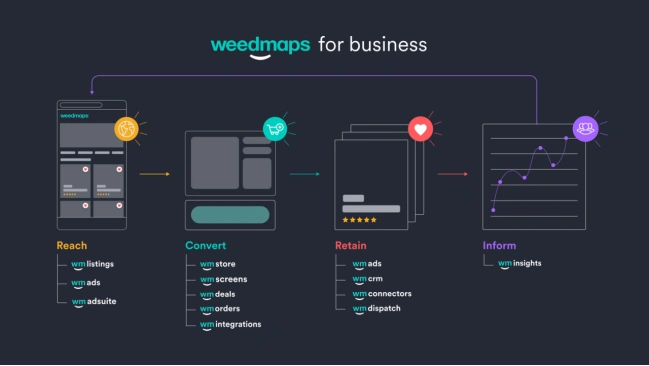
Programmatic Advertising Platforms for Regulated Industries
Cannabis businesses now have access to programmatic platforms specifically designed for regulated industries, such as MediaJel, which offers targeted and compliant advertising solutions that effectively reach desired audiences. These sophisticated platforms enable precise targeting based on detailed demographics and consumer behaviors, ensuring marketing efforts are both compliant with regulations and highly effective in reaching audiences genuinely interested in cannabis products.
Programmatic advertising in cannabis utilizes Artificial Intelligence (AI) and real-time bidding mechanisms to make dynamic purchases of ad space, with bids made in real-time based on the value each potential viewer brings. This approach provides detailed, trackable metrics such as impressions, revenue, and Return On Ad Spend (ROAS), which are invaluable for campaign optimization and measuring success.
Advanced geofencing capabilities allow cannabis businesses to set specific location parameters, targeting areas such as dispensaries or events while ensuring compliance by limiting exposure to jurisdictions where cannabis advertising is legal. This precision targeting not only increases ad relevance but also ensures regulatory compliance, with cannabis brands able to access diverse online publishers and advertise on mainstream sites like USA Today and ESPN.
The cookieless future of digital advertising particularly benefits cannabis businesses, as programmatic advertising doesn’t rely on traditional tracking cookies, making it inherently more compliant with privacy regulations while still enabling effective audience targeting.
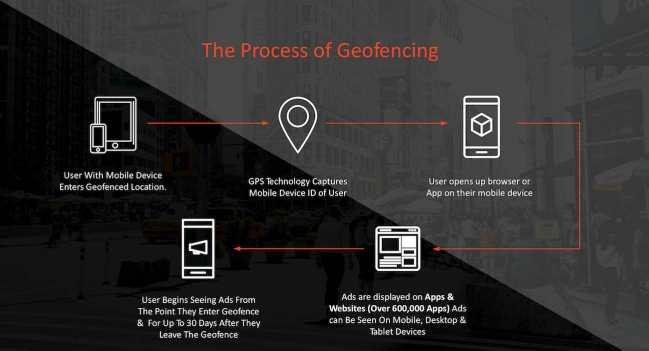
Marketing Automation and Customer Engagement Systems
SpringBig Holdings demonstrates the sophistication of cannabis marketing automation through their comprehensive Software-as-a-Service (SaaS) platform that serves approximately 1,300 brand and retailer clients across more than 2,600 distinct retail locations in North America. Their platform enables clients to distribute more than 2.3 billion messages annually, with over $7.8 billion in gross merchandise value accounted for by clients utilizing their platform.
The SpringBig platform creates powerful network effects between retailers and brands, providing the ability for both to connect directly with consumers through loyalty marketing, digital communications, and text/email/push marketing solutions. Their B2B2C software platform drives new customer acquisition, customer spending, and retail foot traffic while enabling clients to offer consumers paid premium loyalty tiers and prepaid gift card functionality.
Weedmaps for Business represents a fully integrated solution specific to the cannabis industry, incorporating embedded compliance functionality so clients comply with state law through integrated software solutions ranging from live menus, logistics and fulfillment, POS integrations, inventory management, and data analytics. This comprehensive approach combines both a scaled marketplace and software solutions, unlike other technology providers that offer either software without marketplace functionality or marketplace without integrated software.
WM Dispatch provides compliant, automated, and optimized logistics and fulfillment last-mile delivery software, including driver apps that help clients manage their delivery fleets. This product streamlines the delivery experience from in-store to front-door while maintaining regulatory compliance across different jurisdictions.
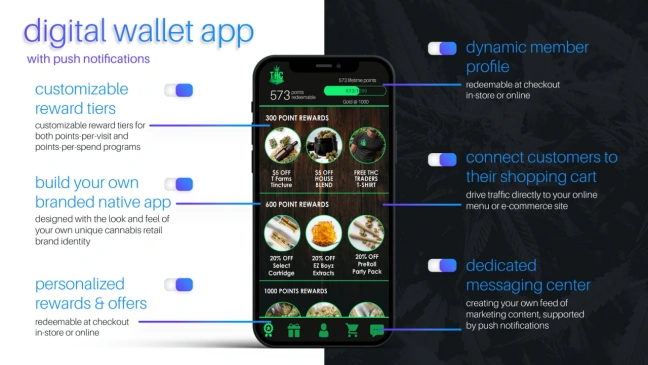
Data-Driven Decision Making and Campaign Optimization
Cannabis businesses increasingly implement real-time analytics capabilities that allow marketers to monitor campaign performance and adjust based on current data. This approach proves highly effective during periods of rapid market changes or evolving customer behaviors, enabling companies to optimize their marketing investments continuously while adapting to changing market conditions and regulatory requirements.
Advanced A/B testing capabilities allow cannabis marketers to compare different marketing strategies and determine which performs better by testing variables like headlines, images, or call-to-action buttons. This systematic approach to optimization helps identify what resonates most with audiences and enables continuous campaign refinement.
Sophisticated cannabis businesses leverage predictive analytics that use historical data to forecast future trends and customer behaviors, enabling marketers to anticipate customer needs and tailor their campaigns accordingly. By analyzing past interactions and purchase patterns, companies can create targeted strategies that are more likely to engage and convert customers while staying ahead of market trends.
Data visualization tools have become essential for cannabis businesses, with research indicating that 65% of people are visual learners who process information more efficiently when data is translated into images, charts, or diagrams. These tools simplify complex statistics and provide actionable insights that can be easily shared between marketers, decision-makers, and team members.
The integration of these advanced technologies enables cannabis businesses to compete effectively in an increasingly sophisticated marketplace while maintaining compliance with complex regulatory requirements and privacy standards that continue evolving across different jurisdictions.
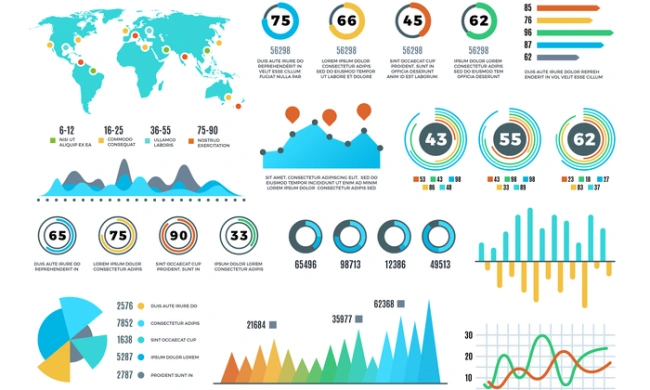
Conclusion
Implementation Roadmap
Phase 1: Foundation Building
- Conduct comprehensive regulatory review and establish compliance procedures
- Develop detailed customer personas through market research and customer interviews
- Create content strategy focused on education and customer value
- Establish measurement frameworks and analytics infrastructure
Phase 2: Channel Development
- Build email marketing database and implement automation sequences
- Develop SEO-optimized website with educational content resources
- Establish social media presence with consistent educational content
- Create loyalty program structure and customer retention strategies
Phase 3: Optimization and Scale
- Implement advanced customer data analysis and segmentation
- Develop partnership opportunities with complementary businesses
- Expand content marketing through video, webinars, and community events
- Test and optimize marketing campaigns based on performance data
Final Thoughts
The cannabis industry is at a pivotal moment where early adopters of strategic marketing can secure lasting market leadership. With the U.S. legal cannabis market expected to surpass $45 billion annually and global medical cannabis markets projected to reach $87.4 billion by 2027, the financial potential is immense. Businesses that master regulatory compliance and leverage emerging marketing technologies will gain competitive advantages, enabling faster market entry and more efficient customer acquisition. As the market consolidates, companies investing in data-driven marketing, customer loyalty, and authentic community engagement will build sustainable brands that command premium positioning and customer loyalty.
Success in this evolving industry requires a proactive approach to innovation, compliance, and customer connection. Cannabis businesses that invest in comprehensive marketing strategies today will not only thrive amid increasing competition but also shape the future of the industry, capturing the greatest share of its unprecedented growth opportunities.
